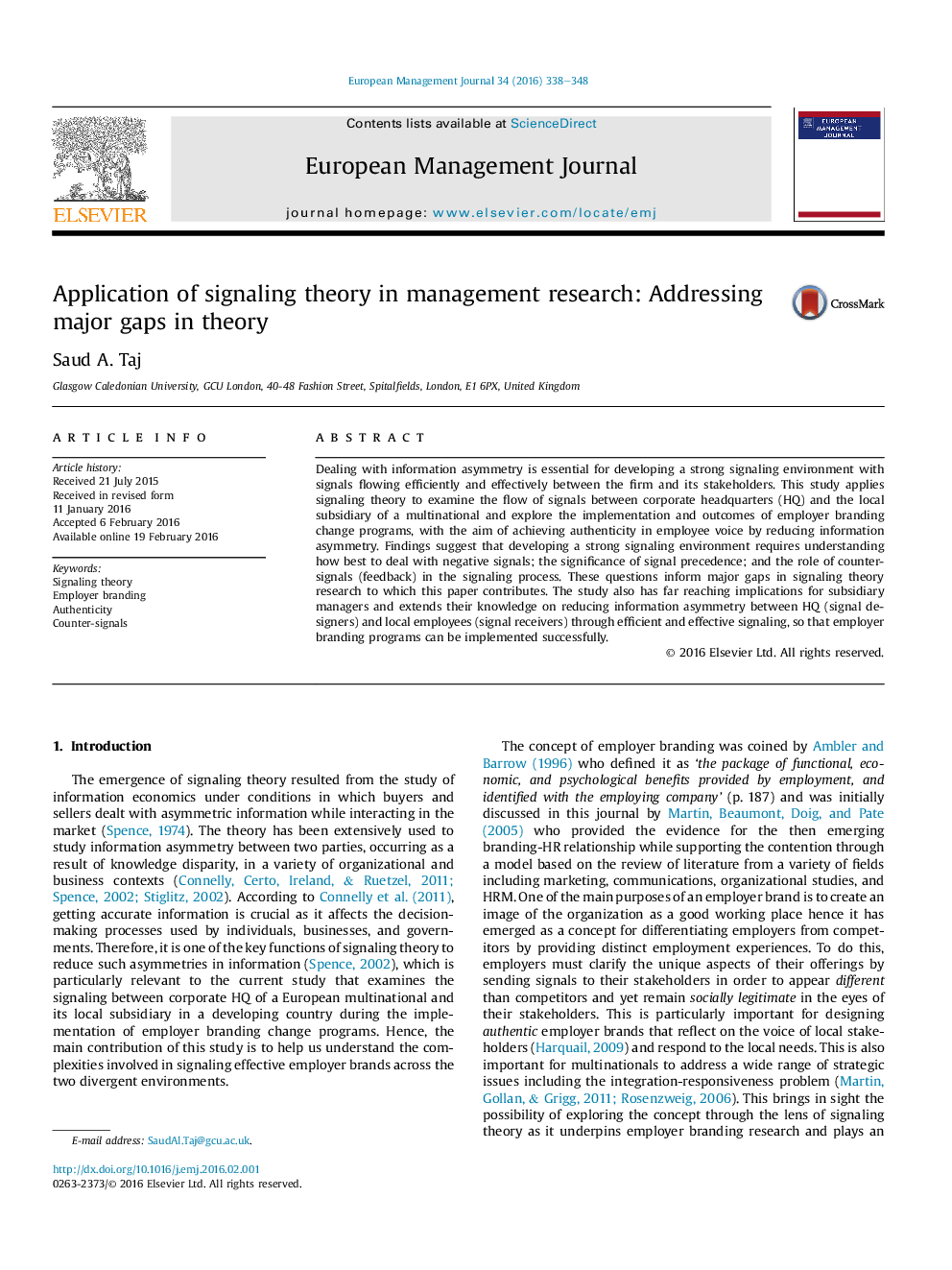| Article ID | Journal | Published Year | Pages | File Type |
|---|---|---|---|---|
| 1014714 | European Management Journal | 2016 | 11 Pages |
Dealing with information asymmetry is essential for developing a strong signaling environment with signals flowing efficiently and effectively between the firm and its stakeholders. This study applies signaling theory to examine the flow of signals between corporate headquarters (HQ) and the local subsidiary of a multinational and explore the implementation and outcomes of employer branding change programs, with the aim of achieving authenticity in employee voice by reducing information asymmetry. Findings suggest that developing a strong signaling environment requires understanding how best to deal with negative signals; the significance of signal precedence; and the role of counter-signals (feedback) in the signaling process. These questions inform major gaps in signaling theory research to which this paper contributes. The study also has far reaching implications for subsidiary managers and extends their knowledge on reducing information asymmetry between HQ (signal designers) and local employees (signal receivers) through efficient and effective signaling, so that employer branding programs can be implemented successfully.
